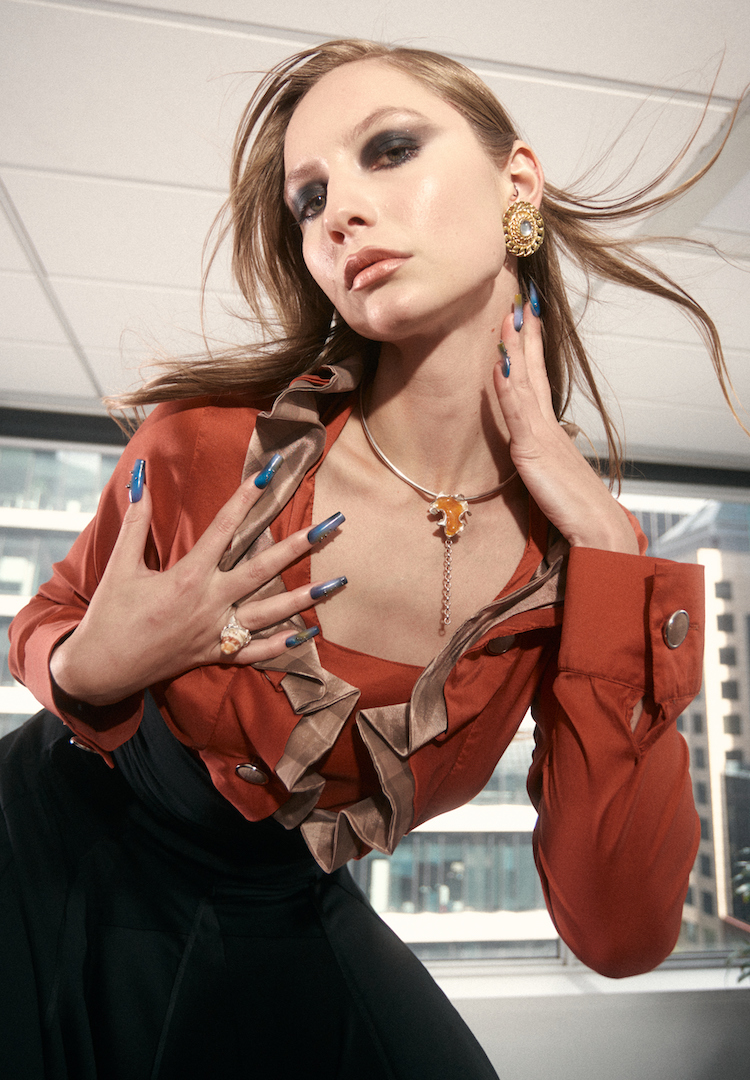
PHOTOGRAPHY BY ELLA MAXIMILLION
WORDS BY YASMIN GOWER
<!–
–>
<!–
–>
<!–
–>
Sensory spending encouraged.
When I first started watching ASMR ten years ago, you would’ve thought I’d joined a cult. My family and friends thought it was the strangest, and most uncomfortable, experience and didn’t understand what all the fuss was about. They didn’t know what they were missing – I’ve been getting virtual scalp massages every night for a decade now.
Formally known as autonomous sensory meridian response, this relaxing and tingly sensation was the catalyst for the creation of the online ASMR community in the 2000s. Fast forward to 2024, and ASMR is an entire industry. Content across platforms like YouTube and TikTok has exploded, with countless ASMR videos reaching hundreds of millions of views.
For more fashion news, shoots, articles and features, head to our Fashion section.
In the realm of sensory experiences, ASMR has carved out a niche that extends far beyond its initial purpose of relaxation and sleep aid. It has, somewhat sneakily, sashayed down the runway into the glitzy world of fashion and beauty, bringing with it a new wave of sensual marketing.
This marketing phenomenon has been embraced by popular brands like Skims, W Magazine and Givenchy, who have all dipped their toes into the ASMR pool, hoping to stir the senses and emotions of consumers in a way traditional marketing rarely does.
These brands are always looking for the next big marketing draw, so it’s not surprising they’re making the most of ASMR’s popularity and utilising creative tactics, like sensual marketing, to draw in customers. Sensual marketing is a strategy that engages multiple senses (touch, sound, smell, taste), in an attempt to create a memorable and emotional connection with a brand or product.
Leveraging the popularity and power of ASMR in their marketing means labels are going beyond traditional visual and auditory advertising, using elements like scents and textures to enhance customer experience and loyalty.
A 2021 study in the Journal of Business Research found that “an emotional relationship between a fashion brand and a consumer could lead to a better understanding of the brand, so new marketing methods which can stimulate the emotional, sensual part of the customer is in need”.
The premise is simple yet profound: by engaging consumers in an immersive experience that tickles their senses, brands can foster a deeper emotional connection, turning passive viewers into loyal customers.
Labels are creating a welcoming and safe environment for consumers to interact with their content, lulling them into a false sense of security. When you’re tingling all over it’s easy to gloss over the fact you’re being sold a product.
This sense of intimacy allows for products to be meticulously studied, as ASMR content typically focuses on a single product for an extended period. Whether they’re watching someone play with textures to create relaxing sounds or analysing every minute detail of an item, consumers are inadvertently engaging with a product in close detail.
It’s a level of detail that isn’t available in other shopping environments, and those watching ASMR content created for a brand’s marketing campaign are likely to already have a positive experience, as a result of the tingly sensations ASMR provokes.
This, coupled with the extreme care and detail shown towards the products being sold, is how labels attempt to bond with consumers, with that same 2021 study claiming if “the bonding process is successful, the customer will go on to buy the product impulsively, which is the primary goal of ASMR marketing”.
ASMR creators are taking notice
Maria Viktorovna, known on YouTube as Gentle Whispering ASMR, is revered in the ASMR community for her artistry and innovation, and she views her work as an extension of her style, which she describes as a blend of romantic, elegant and boho elements.
Through her videos, she explores the intersection of ASMR with fashion and beauty, creating content that’s as aesthetically pleasing as it is soothing, explaining that “beauty, specifically to me, is synonymous with aesthetically pleasing ASMR content. In real life, any personal attention from professions like hair, makeup artists and estheticians is ASMR gold.”
This synergy between visual allure and sensory gratification is what makes ASMR a perfect fit for the fashion and beauty industries. As ASMR continues to flourish, it reshapes the landscape of online influence. Maria and her fellow ASMRtists represent a new breed of influencers who engage with their audience on a profoundly personal level.
Their ability to create a sense of intimacy and connection through their content challenges traditional notions of influence and paves the way for more meaningful brand collaborations. “These large companies’ marketing teams are constantly looking for creative ways to advertise their products,” Maria explains. “ASMR is [the] direct opposite of typical loud and fast advertisements and it creates a more relaxed and soothing experience for the consumer.”
In the tapestry of modern marketing, ASMR is a reminder that in the digital age, the most powerful connections touch not just the mind but the soul. As Maria puts it, “ASMR is the perfect vehicle for sensory-inclusive experiences.” In the bustling world of fashion and beauty, where every brand vies for attention, it offers a whisper of intimacy, a gentle nudge that turns the act of consumption into an experience of connection and tranquillity.
So, as the landscape of digital marketing continues to evolve, let’s not underestimate the power of a whisper, the allure of a gentle touch or the intimacy of a shared sensory experience. In the world of fashion and beauty, where innovation meets aesthetics, ASMR is a testament to the allure of sensory marketing.
For more on ASMR, head here.
